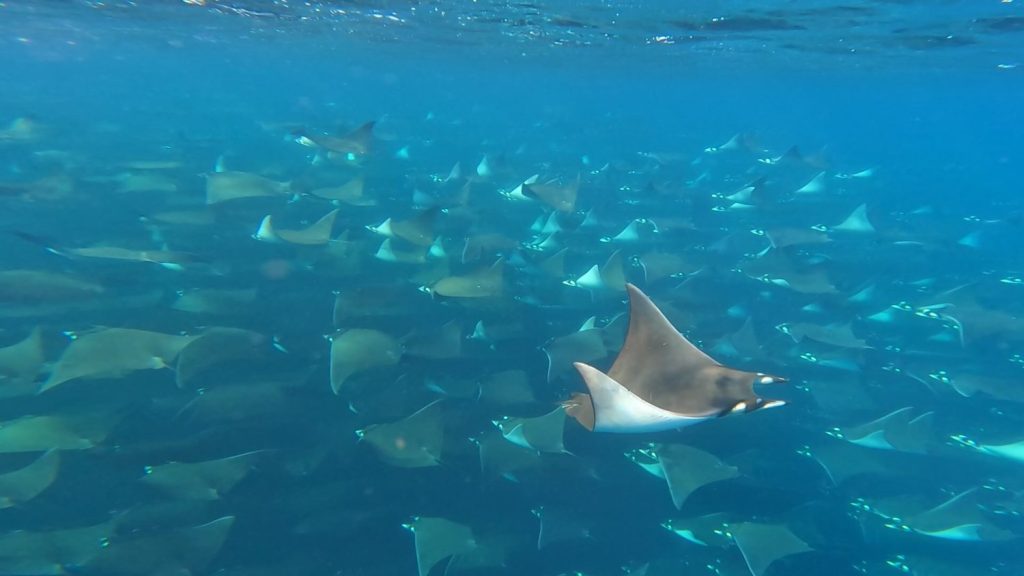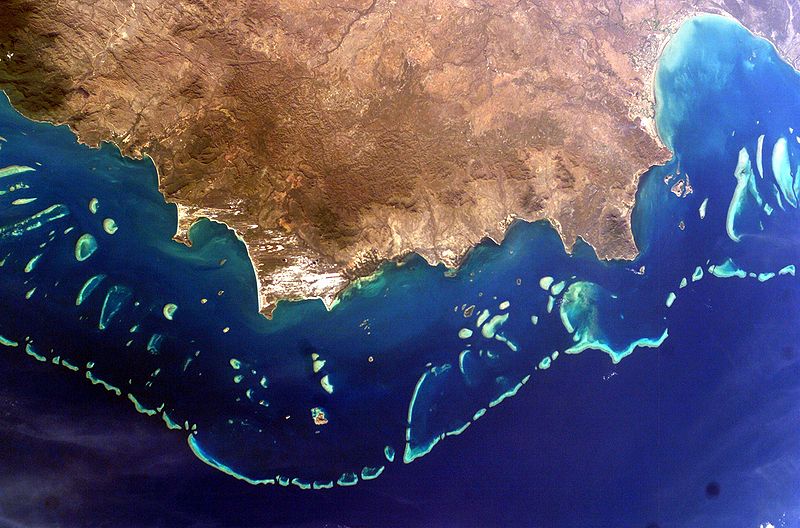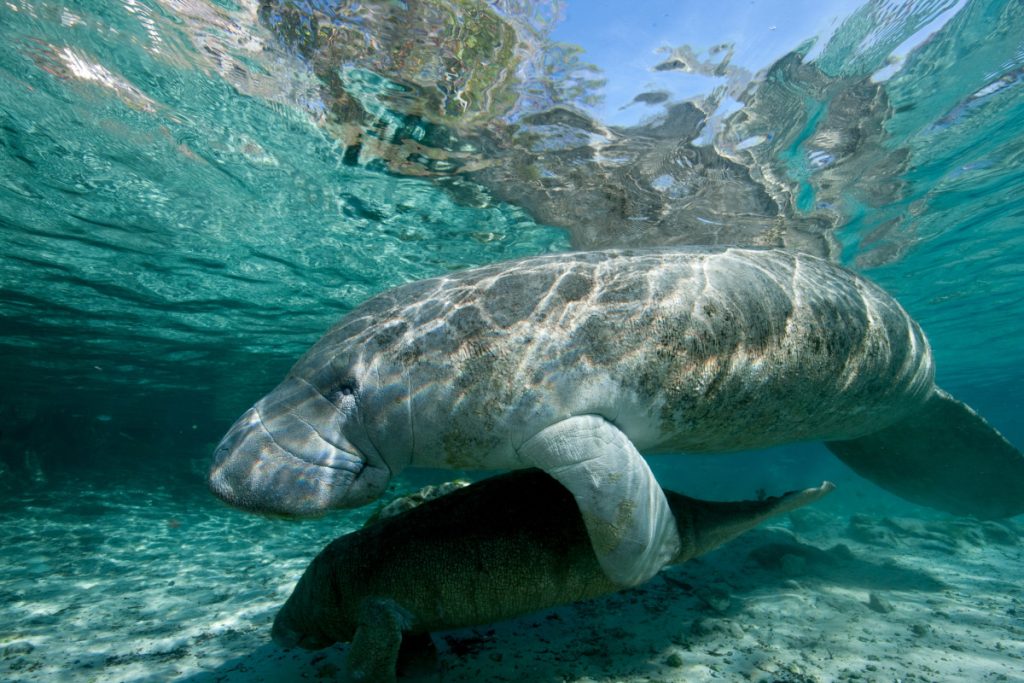Coconuts!
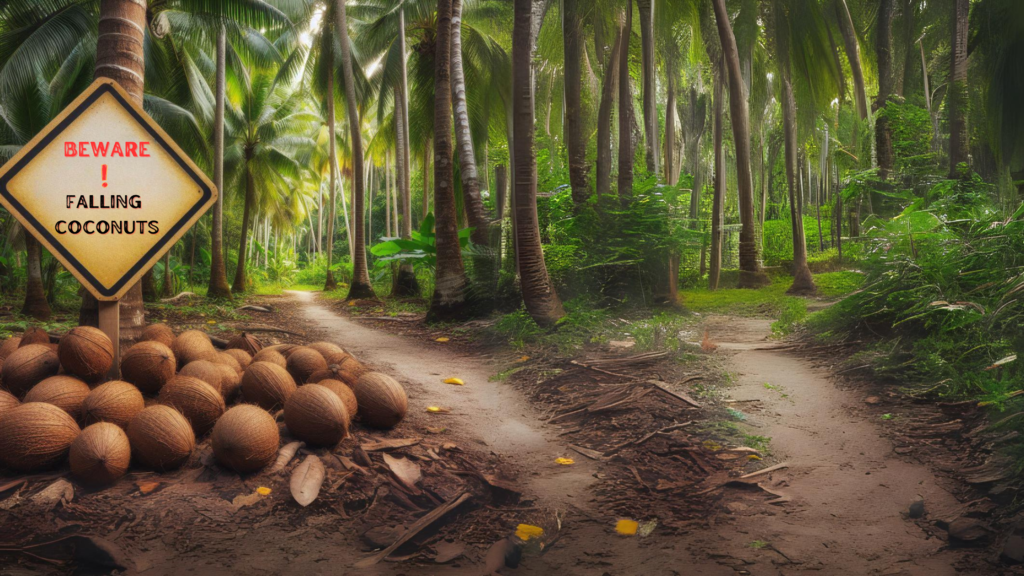
When you think of nature’s most dangerous creations, you might picture ferocious sharks, lightning storms, or the relentless and always-annoying mosquito. But here’s a plot twist that will knock your flip-flops off: coconuts. Yes, you read that right—coconuts.
These tropical fruits are not just a refreshing drink or a tasty addition to your granola; they are also stealthy, high-flying assassins, capable of delivering a fatal blow that’s more likely than a shark attack. Let’s dive into this hairy, nutty business and discover why coconuts might be the true overlords of the tropics.
The Hidden Danger of the Coconut
First, let’s talk numbers. Every year, about 150 people are killed by falling coconuts. That’s right—150. To put that in perspective, you’re statistically more likely to be dispatched by a coconut than a shark (with an annual fatality rate of between 5 – 10). You see, while a shark attack might leave you with a gnarly scar and an interesting story, a coconut-induced fatality is less about the drama and more about the absurdity of it all. Imagine the obituary: “Tragically taken out by coconut – proving life has a wicked sense of humour.”
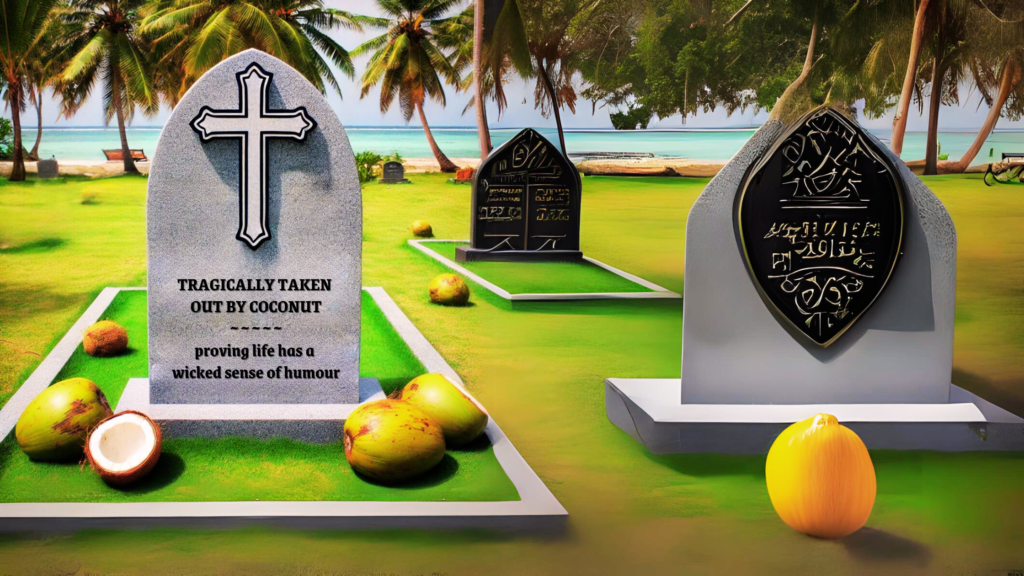
In a twist of historical irony, the phrase “village idiot” might well owe its origins to the sneaky lethality of falling coconuts. Picture this: centuries ago, a village in a tropical paradise, where coconut palms sway lazily in the breeze, and every so often, a hefty nut plummets from the sky with lethal precision. Early victims of these airborne assaults were often left with severe brain injuries, resulting in peculiar behavior that led locals to label them as “village idiots.”
The term, once a mark of endearing simplicity, might have been coined with a more sinister edge—those who suffered coconut-induced concussions became the local eccentrics, their personalities altered, and their social standing diminished. So, the next time you hear the term “village idiot,” you might just be looking at a historical coconut casualty—a testament to the nut’s dangerous prowess and its unwitting role in reshaping not just landscapes but also the very fabric of human reputation.
Coconuts are essentially nature’s way of saying, “Here, have a drink—right after you dodge a potential death trap.” These seemingly harmless fruits can weigh up to 3kg and can drop from a height of up to 30 metres. When a coconut decides to take the plunge, it’s not just falling; it’s skydiving with a mission. Forget Shark Week—welcome to Coconut Catastrophe Week.
The Divers’ Paradox
Divers love to explore the ocean’s depths, but here’s a thought: if they paid as much attention to potential dangers on the beach as they do to underwater perils, they might be better off. While divers meticulously prepare for encounters with marine animals and tricky currents, they might overlook the very real threat posed by their immediate surroundings. Imagine if, before every dive, divers took a moment to consider the risk of falling coconuts and the perils of rogue palm trees—it’s all about safety people!
Consider a new kind of pre-dive briefing that includes “Survival Tactics for Falling Coconuts” and “Evasive Maneuvers Against Rogue Palm Trees”. After all, while they’re calculating dive plans and fine-tuning buoyancy, they could also be strategising how to avoid a coconut-themed disaster.
The next time you see divers gearing up on the beach, picture them running through a checklist of beachside hazards with the same intensity they reserve for underwater threats. Because let’s face it, the prospect of a coconut cracking your skull is a lot more alarming than what awaits below the surface.
The Coconuts’ Many Hats: A Misleadingly Versatile Villain
Let’s not forget that coconuts are not just clumsy assassins but also incredibly versatile. They serve a myriad of purposes. Their outer husk can be used for making coir mats, brushes, and even ropes. The shell itself is handy for making bowls and spoons. And then there’s the coconut water—nature’s isotonic drink that’s supposed to be a cure-all, from rehydrating you after a long run to fixing your hangover.
But wait, there’s more! The meat inside the coconut can be turned into coconut milk, coconut oil, and coconut flour. Ever tried coconut-infused face cream? That’s right, coconuts are not just out to kill you; they’re also attempting to improve your complexion.
Sustainability: Coconuts and Their Green Agenda
On the sustainability front, coconuts are like that annoying person who always brags about how environmentally conscious they are. Coconuts are incredibly sustainable. They grow quickly, use minimal water compared to other crops, and can be harvested year-round. Even the parts you don’t eat have uses, contributing to waste reduction in so many ways it makes your head spin.
The Global Coconut Conspiracy
If you think coconuts are just a beach-side nuisance, think again. The coconut industry is global and mighty. From the bustling markets of Thailand to the sandy shores of the Caribbean, coconuts are a staple of tropical economies. They’re in your skincare products, your cookies, your savory dishes, and even your vegan cheese. But beware: with great coconut power comes great coconut responsibility. These fruits are involved in a silent conspiracy against humanity, disguised as health food while plotting their next aerial assault.
Coconut Safety Tips for the Modern Age
So, how do you protect yourself from this airborne threat? Here are a few coconut safety tips to keep you safe:
- Stay Aware: Always be cautious when walking under palm trees. Look up—because the next thing falling might just be a coconut. Don’t look where you’re going, look what you’re going under!
- Dodge with Style: If you hear a suspicious rustling, perform a quick and graceful evasive maneuver. You never know when a coconut might decide to go rogue.
- Headgear: Helmets aren’t just for cyclists and construction workers. Consider donning one while strolling along those gorgeous white beaches.
- DIY Coconut Defense: Carry a steel reinforced umbrella, not for rain but for possible coconut defense. It’s not about staying dry; it’s about staying alive.
In the end, coconuts are a marvel of nature with their endless uses and eco-friendly attributes, but they come with a serious disclaimer. They’re a sustainable marvel with an evil intent—one moment they’re bringing you a refreshing drink, and the next, they’re crashing through your roof.
So, next time you enjoy a piña colada or a bowl of coconut curry, take a moment to appreciate this dual-natured fruit. Just don’t stand too close to any palm trees, or you might find yourself on the receiving end of nature’s most audacious prank. And remember, while sharks may be scary, the real danger is lurking above, waiting to drop a nut on your head.
Now, consider this: divers, those brave souls who spend most of their time submerged in water, might want to rethink their fears. Sure, you may navigate through murky waters and encounter sea creatures, but let’s face it, a shark isn’t going to drop from a palm tree and squash you like a bug.
Divers might want to worry less about the great white shark and more about the imminent danger lurking above them in the form of leafy green palms.
Accidental Death Comparisons
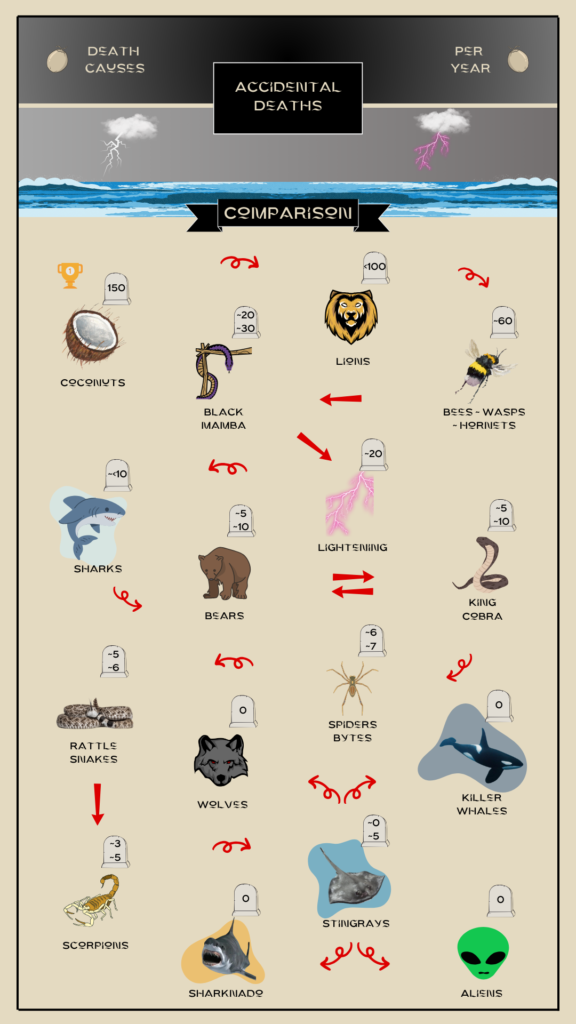
- Coconuts: 150 Deaths Per Year
- Sharks: Average less than 10 deaths per year.
- Bears: Between 5-10 fatalities per year.
- Lions: Less than 100 deaths per year.
- Lightening: Average 20 deaths per year.
- Bees/Wasps/Hornets: Average 60 deaths per year.
- Spider Bites: 6-7 deaths per year.
- Scorpions: 3-5 deaths per year.
- Wolves: 0 deaths per year
- Shaknadoes: 0 – no comment necessary.
- Rattlesnakes: 5-6 deaths per year.
- Black Mamba: 20-30 fatalities per year
- King Cobra: 5-10 deaths per year.
- Aliens: 0 outside of the Marvel movies.
- Stingrays: 0-5 deaths per year.
- Orcas: 0 fatalities ever.
In summary, while these dangers are undeniably horrifying, falling coconuts are an unexpectedly high-risk threat that outstrips many other fears in terms of likelihood, especially if you’re living in or visiting tropical areas. So, while you’re thinking about the perils of natural and supernatural threats, don’t forget to keep a wary eye on those overhead coconuts—they might be the more immediate danger!



